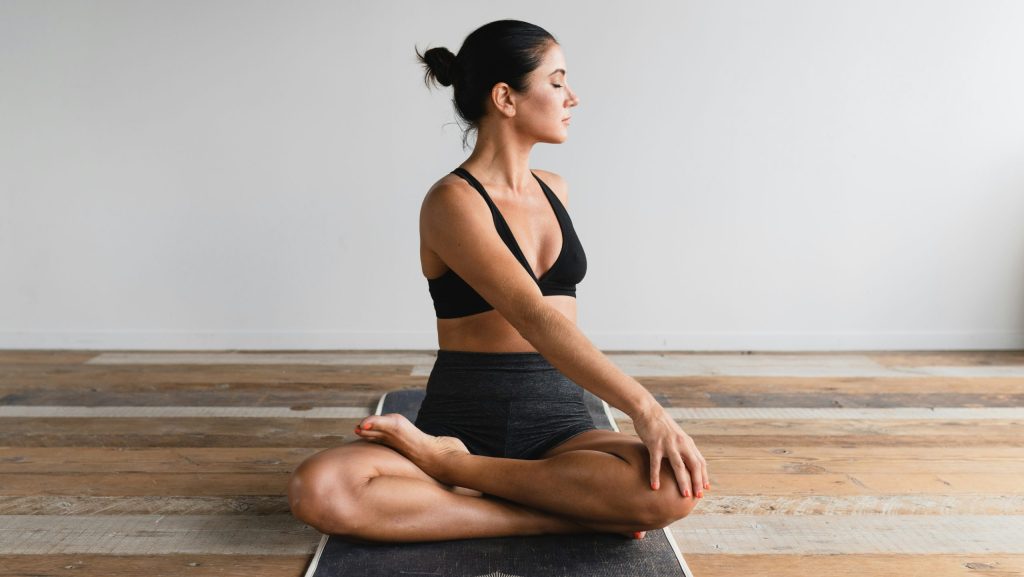Table of Contents
Recovery is a crucial component of fitness regimes, especially for those engaged in mind-body exercises such as yoga and Pilates. While many focus on the intensity and duration of their physical workouts, the importance of incorporating recovery processes to support both physical health and mental well-being is significant. Proper recovery strategies not only help in rejuvenating muscles but also in restoring mental focus, which is essential for anyone participating in regular physical activity.
Recovery in the context of mind-body exercises involves more than just physical rest; it includes mental relaxation and emotional balance. These exercises require significant mental and emotional investment, which highlights the need for comprehensive recovery strategies.
“Did you know that incorporating mindfulness and relaxation techniques into your recovery can reduce stress levels by up to 40% according to recent studies?”
By integrating specific recovery techniques into fitness routines, individuals can significantly enhance their overall health. Employing mind-body exercise recovery strategies improves physical performance and mental clarity. Techniques such as relaxation techniques, holistic recovery, and mindfulness in fitness are crucial. They help reduce stress, improve focus, and increase bodily awareness, contributing to a balanced fitness routine.
Exploring various recovery methods, from breathing exercises to yoga sequences, reveals the beneficial relationship between physical activity and recovery. This relationship is crucial for achieving a balanced approach to fitness.
- Overview of Mind-Body Exercise Recovery: Details on what recovery involves and its importance for sustained mental and physical health.
- Relaxation Techniques for Enhanced Recovery: Specific techniques such as breathing exercises, progressive muscle relaxation, and guided visualizations that assist in physical and mental recovery.
- Yoga Poses for Post-Exercise Recovery: Descriptions of yoga sequences that are effective for different fitness levels and how these poses facilitate muscle recovery and stress relief.
- Mental Recovery Techniques in Fitness: Discussion on how mindfulness practices and cognitive strategies aid in mental and emotional recovery, enhancing overall quality of life.
- Integrating Recovery into Fitness Routines: Practical advice on how to incorporate recovery strategies into daily fitness regimes to maintain balance, enhance performance, and prevent injuries.
By adopting these recovery practices, individuals not only enhance their post-exercise recuperation but also contribute to their long-term health and fitness goals. This guide aims to equip readers with knowledge and practical tips to integrate effective recovery into their fitness routines, ensuring a balanced approach that fosters both physical robustness and mental resilience. This comprehensive approach is essential for maintaining optimal fitness and well-being.

Overview of Mind-Body Exercise Recovery
Mind-body exercises such as yoga, tai chi, and Pilates require physical exertion along with considerable mental and emotional involvement. These activities demand comprehensive engagement of the body and mind, making the recovery processes crucial for maintaining participation and enhancing overall health. Recovery in these exercises encompasses physical rest, mental relaxation, and emotional stability, addressing the unique demands of mind-body activities. This section examines the components of recovery for mind-body exercises, its significance, and the specific exercise types that benefit from dedicated recovery protocols.
Definition and Importance of Recovery
Recovery in the context of mind-body exercises involves the practices and actions taken to allow the body and mind to recuperate after physical activity. This process includes muscle repair, mental relaxation, and emotional stabilization. The significance of recovery in mind-body fitness is profound as it prevents injuries, reduces stress, and improves overall well-being.
“Did you know that adequate sleep and balanced nutrition can increase muscle recovery speed by up to 20%, significantly enhancing overall exercise performance?”
Effective recovery is crucial as it helps maintain the body’s balance. For example, mind-body recovery processes stabilize hormone levels, reduce inflammation, and facilitate tissue repair, which are critical after physical exertion. Moreover, mental recovery restores cognitive functions and emotional balance, crucial after intense exercise bouts.
Incorporating effective recovery protocols can significantly enhance performance in subsequent workouts by preparing participants physically, mentally, and emotionally, which is essential for the successful practice of mind-body disciplines.
Benefits of Holistic Recovery Methods
Holistic recovery methods include a variety of practices that aid in the comprehensive restoration of the body and mind, such as adequate sleep, balanced nutrition, hydration, mindfulness practices, and passive relaxation techniques like meditation and deep breathing. The benefits of holistic recovery approaches are extensive:
- Physical Health: Holistic methods enhance the body’s natural healing, increase muscle recovery, reduce fatigue, and prevent chronic injuries.
- Mental Resilience: These methods reduce stress, improve concentration, enhance mood, and regulate emotions through practices like meditation and mindfulness.
- Mind-Body Connection: They promote a deeper understanding and awareness of the body and emotional states, enhancing the overall exercise experience and effectiveness of physical activities.
Overview of Mind-Body Exercise Types
Various types of mind-body exercises each have specific recovery needs. For instance:
- Yoga: Involves postures and breathing exercises requiring flexibility and mental focus. Recovery typically includes gentle stretching and guided meditation to relax muscles and calm the mind.
- Tai Chi: A martial art characterized by slow, deliberate movements. Recovery focuses on maintaining fluid motion and mental clarity, often achieved through qigong exercises that balance the body’s energy.
- Pilates: Focuses on core strength, balance, and alignment, demanding recovery practices that promote muscular elasticity and joint mobility, such as foam rolling and dynamic stretching.
| Recovery Method | Physical Benefits | Mental Benefits |
|---|---|---|
| Adequate Sleep | Enhances muscle recovery | Improves cognitive function |
| Balanced Nutrition | Reduces fatigue | Enhances mood and emotional regulation |
| Hydration | Supports natural healing | Increases mental clarity |
| Mindfulness Practices | Prevents chronic injuries | Reduces stress, improves focus |
| Passive Relaxation | Enhances muscle flexibility | Promotes emotional peace |
This detailed examination of recovery processes specific to mind-body exercises emphasizes why recovery is as vital as the exercises themselves. Recognizing the benefits of holistic recovery methods and their application across various mind-body exercise types not only enhances physical and mental well-being but also ensures the sustainability of these practices. As the exploration of specific relaxation techniques continues, further improvements in recovery outcomes and overall fitness efficacy can be achieved.

Relaxation Techniques for Enhanced Recovery
Relaxation techniques are essential components in the recovery process from physical activities, particularly after mind-body exercises. These methods, including breathing exercises, progressive muscle relaxation, and guided visualization, play critical roles in reducing stress and enhancing recovery effectiveness. This discussion focuses on how these techniques contribute to physical recuperation and mental relaxation, which are crucial for maintaining a holistic fitness regime.
Breathing Exercises for Relaxation
Breathing exercises are fundamental to relaxation and offer significant benefits for recovery from physical activity. Controlled inhalation and exhalation help to lower heart rate and blood pressure, which typically rise during intense physical efforts. Deep breathing, particularly diaphragmatic breathing, enhances oxygen exchange critical for muscle recovery and fatigue reduction.
Activating the parasympathetic nervous system through deep breathing promotes relaxation and recuperation, countering the stress response triggered by exercise. These exercises also benefit mental health by reducing anxiety symptoms and stabilizing mood.
Integrating breathing exercises into fitness routines is straightforward. Spending a few minutes on deep breathing before and after workouts can markedly improve relaxation and recovery. These exercises can also be part of a dedicated yoga or meditation session to enhance overall well-being.
Deep Breathing:
-
- Reduces heart rate and blood pressure
- Increases oxygen exchange, aiding muscle recovery
- Reduces symptoms of anxiety and improves mood stability
Progressive Muscle Relaxation
Progressive muscle relaxation (PMR) effectively reduces physical tension and promotes recovery. This technique involves tensing each muscle group briefly, then relaxing it, helping to identify and alleviate stress accumulated in muscles during exercise.
Systematically relaxing different muscle groups not only helps identify tension but also enables deeper relaxation levels post-exercise. Benefits of PMR include improved blood circulation, crucial for muscle repair and rebuilding, and reduced soreness and discomfort after workouts.
Incorporating a 10-15 minute PMR session at the end of a workout can facilitate a smoother transition to a rest state, enhancing overall recovery. PMR is also beneficial for improving sleep quality, a vital component of the recovery process.
Guided Visualization Techniques
Guided visualization involves mentally picturing relaxing scenes or success images to induce calm. This technique uses the mind-body connection to influence physical relaxation, significantly affecting recovery by reducing mental stress and promoting emotional balance.
Regular practice of guided visualization can enhance recovery by encouraging a relaxed mental state and a positive outlook on physical health. Participants using guided visualization often report increased motivation and confidence due to visualizing successful exercise outcomes or personal fitness goals.
“Practicing progressive muscle relaxation can reduce physical tension by up to 40%, significantly improving recovery times after intense workouts.”
Guided visualization can be practiced using audio recordings or mobile applications, or with the assistance of a therapist or coach who can customize the imagery to fit individual recovery needs. Regular inclusion of this technique in recovery routines not only accelerates physical recuperation but also strengthens mental resilience.
Relaxation techniques such as breathing exercises, progressive muscle relaxation, and guided visualization are indispensable in the recovery process from mind-body exercises. These techniques not only facilitate physical recuperation but also promote mental relaxation, making them crucial for a comprehensive fitness regime. By adopting these methods, individuals can optimize their recovery, improve overall health, and maintain a balanced approach to fitness. Further exploration of these methods will reveal additional benefits and ways to integrate them into daily fitness practices.

Yoga Poses for Post-Exercise Recovery
Yoga is an effective tool for aiding recovery after physical activities, employing specific poses and sequences that facilitate muscle relaxation and mental calmness. This section will detail the use of yoga for recovery, discussing gentle poses for beginners, intermediate sequences, and restorative practices that help the body and mind recover and rejuvenate post-exercise.
Gentle Yoga Poses for Beginners
For those new to both yoga and recovery techniques, gentle yoga poses offer a safe and beneficial starting point. These poses typically involve slow movements and mild stretching that help initiate muscle relaxation and mental ease. The Cat-Cow stretch, for example, alternates between rounding and arching the back, improving spinal flexibility and relieving tension in the neck and back.
Another useful beginner pose is the seated forward bend, which stretches the lower back and hamstrings—areas commonly tightened during physical activities. These gentle stretches increase blood circulation, which is essential for muscle repair and alleviation of post-exercise stiffness.
Regular practice of gentle yoga can significantly enhance flexibility, decrease muscle soreness, and reduce the likelihood of injuries. Each session also encourages deep breathing and mindfulness, helping practitioners become more aware of their body’s needs and areas requiring attention.
“Regular practice of Sun Salutation can increase flexibility and reduce recovery times by up to 30%, enhancing overall athletic performance.”
Yoga Sequences for Intermediate Levels
Individuals with some yoga experience can benefit from intermediate sequences that include a mix of standing and seated poses. These sequences are designed to balance and relax the body after strenuous physical activity.
The Sun Salutation sequence is particularly beneficial for recovery, consisting of smoothly flowing poses that stretch and strengthen the body while also promoting mental clarity through synchronized breathing. This sequence effectively reduces stress and aligns the muscles and spine.
Intermediate yoga sequences often incorporate poses like Warrior I and II, which strengthen the legs and core, improve hip and chest flexibility, and help maintain focus and endurance. These poses are not only physically recuperative but also aid in mental focus, crucial for sustained physical activity.
“Regular practice of Sun Salutation can increase flexibility and reduce recovery times by up to 30%, enhancing overall athletic performance.”
Restorative Yoga for Deep Relaxation
Restorative yoga focuses on deep relaxation and stress relief using props to support the body in positions of comfort. This practice allows for profound relaxation without physical exertion, making it ideal for deep recovery and mental peace.
The Supported Child’s Pose and Legs-Up-the-Wall pose are two restorative practices particularly effective in soothing the nervous system and promoting calmness. The Supported Child’s Pose gently stretches the back, while Legs-Up-the-Wall pose helps reduce swelling and fatigue in the legs by reversing blood flow and improving circulation.
| Pose | Benefits |
|---|---|
| Supported Child’s Pose | Soothes nervous system, promotes calmness |
| Legs-Up-the-Wall Pose | Reduces leg swelling, increases circulation |
Yoga offers a comprehensive approach to post-exercise recovery, with specific practices suited for different levels of experience and recovery needs. From gentle stretches for beginners to dynamic sequences for intermediate users, and deeply relaxing restorative yoga, each practice supports physical and mental recovery. Integrating these yoga techniques into a regular recovery regimen can lead to substantial improvements in overall health, wellness, and athletic performance. Further exploration of these yoga practices can provide greater benefits and insight into their effective integration into daily routines.

Mental Recovery Techniques in Fitness
Mental recovery is a crucial component of overall fitness, enhancing both psychological well-being and physical performance. This section elaborates on various mental recovery techniques, including mindfulness and meditation, their emotional benefits, and cognitive strategies for stress reduction, which are essential elements of a comprehensive fitness regimen.
Mindfulness and Meditation Practices
Mindfulness and meditation are integral to modern fitness routines, offering significant benefits for mental clarity and emotional stability. These practices entail focused breathing and active awareness, which are effective in reducing stress and promoting relaxation. Mindfulness meditation, in particular, focuses on present moment awareness without judgment, which significantly enhances concentration and helps in managing stress during challenging situations.
Engaging regularly in mindfulness meditation is associated with reduced symptoms of anxiety and depression. It also improves the physiological response to stress by lowering cortisol levels, which aids in relaxation. For athletes and fitness enthusiasts, these mental benefits are crucial as they contribute to enhanced training capabilities and competitive performance.
“Regular practice of mindfulness meditation can reduce symptoms of anxiety and depression by up to 30%, according to clinical studies.”
Emotional Benefits of Mental Recovery
Mental recovery techniques offer substantial emotional benefits that are beneficial beyond fitness, impacting overall daily life. These techniques facilitate the processing and release of emotional tensions, which can accumulate during exercise or competitive activities. Addressing emotional stress is vital as it can significantly affect physical health and performance.
Emotional recovery techniques, including guided imagery, journaling, and emotional awareness exercises, enable effective identification and management of emotions. Guided imagery, for instance, promotes relaxation and positive thinking by visualizing peaceful scenes and successful outcomes, which alleviate stress and enhance mood.
These techniques foster resilience, boost self-esteem, and improve emotional adaptability, which are invaluable for those engaged in regular physical activity. They also help prevent burnout and mental exhaustion, contributing to sustained fitness engagement and success.
Cognitive Techniques for Stress Reduction
Cognitive stress reduction strategies target the thoughts and perceptions that contribute to stress. Cognitive Behavioral Therapy (CBT) is a prominent method that assists individuals in recognizing and altering negative thought patterns that lead to stress and anxiety. By changing these thought processes, individuals can better handle stress and improve their overall mental health.
Other effective cognitive techniques include progressive muscle relaxation and autogenic training, which focus on reducing physical tension and enhancing mental relaxation. These methods decrease stress by relaxing muscle groups and promoting calmness throughout the body.
Breathing exercises are another critical aspect of cognitive stress reduction. They not only help in calming the nervous system but also enhance oxygen delivery to the brain, which boosts cognitive function and mental alertness.
Cognitive Behavioral Therapy (CBT):
-
- Helps recognize and modify negative thought patterns
- Reduces stress and improves mental well-being
Progressive Muscle Relaxation:
-
- Decreases physical tension
- Promotes mental calmness
Autogenic Training:
-
- Enhances self-regulation of body functions
- Reduces symptoms of stress
Mental recovery techniques such as mindfulness meditation, emotional health practices, and cognitive stress reduction strategies play vital roles in maintaining overall fitness and well-being. These practices not only aid in psychological recovery but also enhance physical performance by improving focus and reducing fatigue. Integrating these techniques into daily fitness routines allows individuals to achieve optimal health and performance, emphasizing the indispensable nature of mental recovery in a holistic fitness approach. Further exploration of these methods will reveal more about their benefits and guide effective integration into fitness and recovery regimens.

Integrating Recovery into Fitness Routines
Effective integration of recovery strategies into fitness routines is crucial for maintaining optimal performance and preventing injuries. This section examines systematic approaches to including recovery days, active recovery techniques, and long-term recovery planning in fitness programs to ensure sustained health and performance.
Scheduling Recovery Days
Incorporating specific recovery days into fitness routines is critical for enabling the body to repair and strengthen. Such days are essential to prevent the consequences of overtraining, such as injuries and mental fatigue. Structured recovery periods are as critical as regular training sessions because they allow for physical and mental recuperation.
Planning recovery days requires an understanding of the demands placed on the body by various workouts. Post-high-intensity strength training or endurance activities, a recovery day might feature low-impact activities like light stretching or yoga, or complete rest. Integrating at least one recovery day per week helps balance training and recovery, optimizing readiness for future workouts and allowing time to assess physical condition and adjust training plans as necessary.
Combining Active Recovery with Exercise
Active recovery involves engaging in low-intensity exercise to facilitate the body’s natural recovery processes after more strenuous activities. This type of recovery is beneficial for maintaining circulation, which aids muscle repair and clears metabolic waste from the muscles.
Effective active recovery activities include light jogging, swimming, or cycling. These not only help maintain muscle function but also prevent stiffness and accelerate recovery. Integrating active recovery sessions immediately following or on the days between intense workouts can significantly improve fitness outcomes by keeping the cardiovascular system engaged and muscles active, yet not overstressed.
“Incorporating just one scheduled recovery day per week can reduce the risk of sports-related injuries by up to 20%, according to sports medicine research.”
Long-term Strategies for Recovery Integration
Developing a comprehensive plan that incorporates recovery over the long term is essential for sustainability in any fitness regimen. Such planning involves not only scheduling regular recovery days and active recovery sessions but also adapting these strategies as fitness levels and goals evolve.
Long-term recovery planning should include regular assessments of fitness goals and recovery effectiveness, allowing for the adaptation of recovery methods to support increased training intensities or frequencies. Additionally, it’s beneficial to consider seasonal training variations, planning lighter training loads during off-season periods to allow for psychological and physiological recovery.
Employing technology and professional advice can further enhance long-term recovery strategies. Fitness trackers, for example, can monitor physiological markers such as heart rate variability to gauge recovery needs more accurately. Consulting with fitness professionals can provide tailored advice to optimize recovery plans based on individual health metrics and performance goals.
- Maintains blood flow: Ensures nutrients are delivered to muscles, aiding repair.
- Reduces muscle soreness: Gentle activity helps alleviate tightness and pain.
- Enhances overall recovery: Speeds up the muscle-repair process, improving readiness for next intense workout.
Strategically integrating recovery strategies into fitness routines is vital for sustaining health and enhancing athletic performance. Properly planned recovery days, active recovery techniques, and adaptive long-term recovery strategies not only aid physical recuperation but also ensure the longevity of fitness activities. Tailoring these strategies to fit individual fitness goals and lifestyles allows athletes and fitness enthusiasts to achieve more effective and fulfilling training outcomes, ultimately leading to improved health and performance. Further exploration and consistent application of these recovery methodologies will optimize the effectiveness of any fitness routine.

Conclusion: Recovery Techniques for Mind-Body Exercise
This comprehensive exploration of recovery techniques in mind-body exercise has provided detailed insights from foundational principles to sophisticated recovery strategies integrated into fitness routines. Emphasizing the indispensable role of recovery, this article has highlighted how effective recovery enhances both physical and mental health, contributing to sustained performance and well-being.
“Start integrating these recovery techniques into your fitness routine today to not only enhance your physical and mental well-being but also to ensure your fitness longevity. Remember, effective recovery is just as important as your training sessions!”
Recovery is essential in any fitness regime, not just an optional addition but a crucial component that ensures the effectiveness of physical training. The discussions across the subtopics of this article have demonstrated that recovery involves more than mere rest, including a series of deliberate actions and techniques designed to optimize the body’s repair and enhance mental resilience.
Key Insights from Each Subtopic
- Understanding Recovery Basics and Benefits: Recovery is critical for maintaining continuous performance and health. Proper rest, nutrition, and hydration are fundamental to ensuring that individuals can consistently perform at their best.
- Relaxation Techniques: Various relaxation methods like breathing exercises and muscle relaxation are crucial for aiding recovery, reducing stress levels, and preparing the body and mind for upcoming physical challenges, thereby enhancing recovery speed and reducing injury risks.
- Yoga for Recovery: Detailed discussions on yoga poses and sequences showed how they support both physical and mental recovery, adaptable for different fitness levels and serving as a versatile tool for enhancing clarity and stability.
- Mental Recovery Techniques: Techniques including mindfulness and meditation support emotional health and cognitive function, offering benefits that enhance mental resilience and overall psychological well-being.
- Integrating Recovery Strategies: Systematic integration of recovery days and active recovery techniques into fitness routines is crucial for ensuring long-term health and performance, highlighting the need for strategic recovery planning.
In summary, the in-depth examination of recovery techniques presented in this article underscores their critical role in any fitness routine. Recovery is multifaceted, involving physical, mental, and strategic elements that all contribute to healthier, more balanced fitness practices. By adopting these recovery principles, fitness enthusiasts can prevent injuries and enhance their overall health and longevity in sports and fitness activities. The key takeaway is clear: integrating thoughtful recovery strategies is crucial for anyone aiming to achieve and maintain peak physical and mental performance.